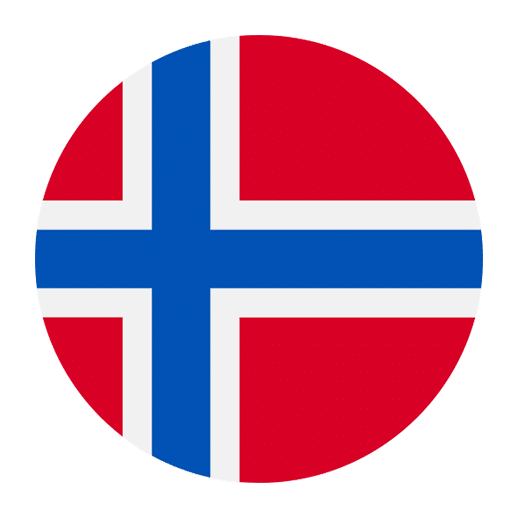Learning a new language is a multifaceted journey that includes not only understanding vocabulary and grammar but also grasping cultural nuances and everyday practicalities. One such practical aspect of mastering a language is understanding how measurements and quantities are expressed. If you’re learning Norwegian, getting acquainted with the country’s system of measurements and quantities will be invaluable for navigating daily life. This article will provide an in-depth look at Norwegian measurements and quantities to help you become more fluent and culturally aware.
The Metric System
Norway, like most of the world, uses the metric system for measurements. This is good news for many learners, as the metric system is simpler and more standardized compared to the imperial system used in the United States. However, understanding how these measurements are expressed in Norwegian can still be a learning curve.
Length
In Norwegian, length is measured in meter (meters). Here are some common terms and their abbreviations:
– **Millimeter (mm)**: millimeter
– **Centimeter (cm)**: centimeter
– **Meter (m)**: meter
– **Kilometer (km)**: kilometer
For example:
– 1 millimeter = 1 millimeter
– 1 centimeter = 1 centimeter
– 1 meter = 1 meter
– 1 kilometer = 1 kilometer
An example sentence:
– “Veien er én kilometer lang.” (The road is one kilometer long.)
Weight
Weight is measured in gram (grams) and kilogram (kilograms). Here are some key terms:
– **Milligram (mg)**: milligram
– **Gram (g)**: gram
– **Kilogram (kg)**: kilogram
– **Tonne (t)**: tonn
For example:
– 1 milligram = 1 milligram
– 1 gram = 1 gram
– 1 kilogram = 1 kilogram
– 1 tonne = 1 tonn
An example sentence:
– “Denne pakken veier to kilo.” (This package weighs two kilograms.)
Volume
Volume is measured in liter (liters) and its subdivisions. Here are some important terms:
– **Milliliter (ml)**: milliliter
– **Centiliter (cl)**: centiliter
– **Deciliter (dl)**: desiliter
– **Liter (l)**: liter
For example:
– 1 milliliter = 1 milliliter
– 1 centiliter = 1 centiliter
– 1 deciliter = 1 desiliter
– 1 liter = 1 liter
An example sentence:
– “Jeg drikker to liter vann hver dag.” (I drink two liters of water every day.)
Temperature
In Norway, temperatures are measured in degrees Celsius (°C). Here are some useful phrases:
– “Det er ti grader ute.” (It is ten degrees outside.)
– “Vannet koker ved hundre grader.” (Water boils at a hundred degrees.)
Understanding temperatures is crucial for daily activities like dressing appropriately for the weather or cooking.
Time
Time is another important aspect of measurements. In Norwegian, time is expressed in a way similar to English but with some variations.
Hours and Minutes
Hours (timer) and minutes (minutter) are straightforward, but it’s essential to get comfortable with the vocabulary:
– “Klokken er åtte.” (It is eight o’clock.)
– “Møtet starter om femten minutter.” (The meeting starts in fifteen minutes.)
Days, Months, and Years
Days (dager), months (måneder), and years (år) are also important to know. Here are the Norwegian words for the days of the week and months of the year:
– Monday: mandag
– Tuesday: tirsdag
– Wednesday: onsdag
– Thursday: torsdag
– Friday: fredag
– Saturday: lørdag
– Sunday: søndag
– January: januar
– February: februar
– March: mars
– April: april
– May: mai
– June: juni
– July: juli
– August: august
– September: september
– October: oktober
– November: november
– December: desember
An example sentence:
– “Jeg har bursdag i juli.” (My birthday is in July.)
Quantities in Everyday Language
In addition to standard measurements, you’ll also encounter everyday expressions of quantities. These can range from food measurements to general terms for amounts.
Food Measurements
When cooking or shopping for groceries, you’ll need to understand various measurements and quantities. Here are some common terms:
– **En skje**: a spoon
– **En kopp**: a cup
– **En liter**: a liter
– **Et gram**: a gram
– **En kilo**: a kilogram
An example sentence:
– “Oppskriften krever en kopp sukker.” (The recipe requires a cup of sugar.)
General Quantities
There are also general terms for quantities that you’ll find useful:
– **Mye**: much, a lot
– **Litt**: a little
– **Mange**: many
– **Få**: few
– **Noen**: some
– **Ingen**: none
Example sentences:
– “Jeg har mye arbeid å gjøre.” (I have a lot of work to do.)
– “Kan jeg få litt mer kaffe?” (Can I have a little more coffee?)
– “Det er mange folk her.” (There are many people here.)
– “Jeg har få venner.” (I have few friends.)
– “Jeg har noen epler.” (I have some apples.)
– “Jeg har ingen penger.” (I have no money.)
Shopping and Market Terms
When you’re out shopping, understanding measurements and quantities is crucial for making purchases, whether you’re buying clothes, groceries, or other items.
Clothing Sizes
Clothing sizes in Norway generally follow European standards, but it’s helpful to know the Norwegian words for different sizes:
– **Liten**: small
– **Medium**: medium
– **Stor**: large
– **Ekstra stor**: extra large
An example sentence:
– “Jeg trenger en stor jakke.” (I need a large jacket.)
Grocery Shopping
Here are some useful phrases and terms for grocery shopping:
– **En pakke**: a package
– **En pose**: a bag
– **En boks**: a can
– **En flaske**: a bottle
– **En liter melk**: a liter of milk
– **Et brød**: a loaf of bread
An example sentence:
– “Jeg vil ha en pose med epler.” (I want a bag of apples.)
Norwegian Idioms Involving Measurements
Every language has its idioms and expressions, and Norwegian is no exception. Here are a few idioms that involve measurements and quantities:
– **”Å ha is i magen”**: To have ice in your stomach. This means to remain calm under pressure.
– **”Å ta noe med en klype salt”**: To take something with a pinch of salt. This means to be skeptical about the truth of something.
– **”Å slå to fluer i en smekk”**: To kill two flies with one swat. This means to accomplish two things at once.
Example sentences:
– “Du må ha is i magen når du tar eksamen.” (You must stay calm during the exam.)
– “Jeg tar det hun sier med en klype salt.” (I take what she says with a pinch of salt.)
– “Vi kan slå to fluer i en smekk ved å handle mat og hente posten samtidig.” (We can kill two birds with one stone by grocery shopping and picking up the mail at the same time.)
Practice Makes Perfect
The best way to master measurements and quantities in Norwegian is to practice them in real-life situations. Here are a few tips to get you started:
Engage with Native Speakers
Engaging with native speakers can provide invaluable practice. Whether you’re asking for directions, shopping, or having a casual conversation, try to incorporate measurements and quantities into your dialogues.
Use Apps and Online Resources
Language learning apps and online resources often include exercises focused on practical vocabulary, including measurements and quantities. Make use of these tools to reinforce your learning.
Cook Using Norwegian Recipes
Cooking with Norwegian recipes can be a fun and practical way to learn measurements. Follow recipes in Norwegian to get accustomed to terms like liter, gram, and skje.
Keep a Journal
Keeping a journal in Norwegian can help you practice writing sentences that include measurements and quantities. Try to write about your daily activities, incorporating as many relevant terms as possible.
Watch Norwegian Media
Watching Norwegian TV shows, movies, or YouTube channels can expose you to how native speakers use measurements and quantities in everyday conversation. Pay attention to how these terms are used contextually.
Conclusion
Understanding Norwegian measurements and quantities is a vital part of mastering the language. It not only helps you navigate daily activities like shopping and cooking but also enhances your ability to engage in meaningful conversations with native speakers. By familiarizing yourself with the metric system, temperature, time, and practical terms used in everyday life, you’ll be well-equipped to handle a wide range of situations in Norway.
So, take the time to practice, use the language in real-life contexts, and don’t hesitate to make mistakes. After all, making mistakes is a crucial part of the learning process. Lykke til! (Good luck!)

